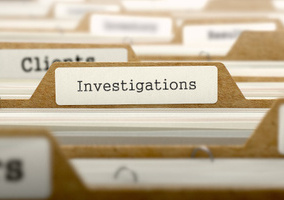Since the Charity Commission announced a fundamental change in its expectations of trustees in relation to safeguarding (extending it from the protection of children and adults at risk to the protection of everyone associated with a charity) in December 2017, we have seen a wealth of new guidance about it.
The guidance explains that safeguarding should be a key governance priority for all charities, whether working online or in person, and that protecting people from harm should be central to their culture.
The challenge in managing safeguarding, as opposed to some other aspects of compliance, is that the duty cannot be fulfilled simply by formulating a list and working through it. It requires what the Commission refers to as qualitative reports, ie subjective considerations about culture and how people feel about the charity’s arrangements, and about what it is reasonable for the charity to do to protect people.
An effective safeguarding culture involves putting people first and prioritising them over tasks, functions, financials or other factors.
In the context of safeguarding culture, the Commission expects trustees “to promote an open and positive culture and ensure that all involved feel able to able to report concerns, confident that they will be heard and responded to”. It identifies cultures that allow “poor behaviour and poor accountability” to pose a high risk.
It is perhaps helpful to start by acknowledging that culture is a nebulous concept; there is no generally accepted definition of organisational culture or indeed of safeguarding culture. It is sometimes referred to as organisational personality, and in this context it is perhaps best expressed as “how things are done around here”. It comprises collective values, norms and beliefs and it informs the proper way to behave, whatever your association with the charity.
As with all aspects of safeguarding in a charity, there is no one-size-fits-all approach, and there needs to be flexibility about how a safeguarding culture is measured and promoted. It requires a proportionate response and the scope and resource required to set culture will depend on what your charity does, where it works and the level of risk.
It may be helpful to start with the charity’s risk register and the safeguarding risks identified In fact, while we are talking about that, it would be prudent to consider when it was last reviewed, given the need to review it if you change the way you work, and to be aware of current affairs, trends and themes, and, reflect on how they may impact your charity and the people you work with.
We would then recommend that the trustees consider how they set and communicate acceptable behaviours and those which will not be tolerated, as they may impact those risks. Cultures do not need documented standards in order to develop and thrive, but in an organisation which is likely to have a number of stakeholders with different perspectives and staff and volunteers joining at different times, they do help to set and reinforce expected standards and values.
We have set out some further questions for charities to consider in the context of setting and developing their safeguarding culture:
1. How do you define your cultural values and expectations?
A clear and intentional statement of values will help to set a vision for the charity, a common purpose for all stakeholders aligned with that vision, and a mechanism by which acceptable behaviours can be set and measured. Indeed, a statement of culture and values and a linked code of conduct, is mandatory for all charities with staff or volunteers.
These values are a useful building block from which to develop policies, procedures and strategies to support and strengthen the charity’s culture and facilitate wider discussions about it.
Though cultures emerge naturally in most organisations, strong cultures can begin with or emerge from a formal culture-setting process, involving discussions across the organisation. Whichever way they are developed, values should be codified and once this has been done, value statements should be revisited and reviewed regularly, in order to ensure they remain up to date and that they align with the issues the charity is facing, and more broadly with current affairs, trends and themes.
If you are not sure whether you or your charity’s values and expectations are sufficiently clear and current, it may be helpful to review matters in line with the Charity Governance Code and/or the safeguarding leadership tool developed by Bond to help leaders to understand what a positive safeguarding culture looks like.
What is clear is that in order to safeguard and protect people, everyone associated with your charity needs to understand what is expected of them, both within your organisation and outside it, including online. Explicit codes of conduct, linked to your values, setting our expected standards of conduct and, just as importantly, explaining what is not acceptable, are key to this.
We recommend that charities reinforce the role that everyone has to play in keeping others safe in reporting concerns and enabling appropriate action to be taken. Most of us like to be liked and many don’t want to be ostracised as a snitch. Defined responsibility to report concerns (and ensuring support for those who do so) may therefore help to encourage the reporting of concerns.
2. Do you listen effectively?
Effective listening to concerns and problems, as well as to what is going well, will help to alert you to a culture that may be heading in the wrong direction. We recommend that all charities review the mechanisms they have for listening to people and receiving feedback about their operations.
This should involve non-hierarchical and meaningful direct communication with representatives from all levels, functions and locations of the organisation (for example, through consultation meetings and working groups, appraisal and complaints) as well as the provision of mechanisms for all stakeholders to report concerns outside formal processes.
One of the most powerful indicators that people do not feel safe to express concerns is silence. The Black Lives Matter and Everyone’s Invited movements identified that while racist and sexual abuse among children is both serious and endemic, many had received no complaints or other reports about it before the movements were started. There were a number of reasons for this including feelings that they would not be believed, that nothing would be done or that things were so commonplace that there was no point in raising it.
Effective listening involves listening carefully, sensitively and without judgement to reported concerns, checking that you have understood the nature of that concern, and then acting on it. Part of the action required will involve explaining what you will do with the information which has been shared and when that person can expect to receive a response so they know as much as they can about what action will be taken.
We also suggest that charities provide various routes for people to provide feedback - including anonymous and/or external routes (such as Protect’s free and confidential advice line – 0203 117 2520 – or emailing the Charity Commission whistleblowing@charitycommission. gov.uk) so that they have options available if, for any reason, they do not wish to raise matters internally. This will increase the chance of the charity receiving warning signs early, so they can be addressed without delay and before the situation escalates.
Over time, organisational behaviours and responses become more ingrained and cultures harder to see. Formal cultural assessment, audit or 360 feedback processes (by questionnaire, interview and/or external facilitator), while not mandatory, may help you to properly assess your charity’s culture and understand whether your values are visible and shared, acceptable behaviours readily understood, and whether those behaviours are demonstrated by everyone involved.
3. How do you support and protect people who have been harmed?
The key to a successful safeguarding culture is ensuring the protection of everyone involved with your organisation. That involves identifying those who have been harmed and acknowledging this, taking appropriate steps to support and protect them, and putting things right where possible.
This will involve effective listening (as set out above) and designated staff should be trained in how to do this. You will not always be able to take all of the steps requested by those who have been harmed, but you should ask what action they would like, and do what you can to deliver that. You should recognise that a person’s wishes and feelings, and what they are comfortable to disclose, may change over time, and maintain a dialogue with that in mind. Confidentiality is likely to be important. They may like a named point of contact within the organisation and/or may prefer external support.
Some charities will have counselling and/or occupational health arrangements for staff and others affected by safeguarding concerns. Even where external support funded by the charity is not available, they can and should signpost other possible avenues for support. Those who have raised safeguarding concerns but not themselves suffered harm should be reassured that their concerns will be looked into, informed when they can expect to hear further and, where appropriate, should be informed of the charity’s whistle-blowing protection.
4. How do you identify and reflect on any safeguarding failings?
Charities should have arrangements in place to ensure that failings are identified, appropriate action taken and lessons are learned in a timely way. Many organisations will have designated safeguarding leads at trustee and executive level and formal committee structures to oversee their safeguarding arrangements. All should ensure that the board undertakes an annual review of safeguarding, which includes a review of the adequacy of the charity’s policies and procedures and whether they are followed in practice, and the identification of particular trends.
Key to the development of an effective safeguarding culture is the need to ensure that at every level of the organisation, allegations are managed appropriately, and people are personally accountable for their actions. This requires leadership from the board and the senior management team, if you have one, to live the charity’s values themselves and take appropriate action where others may have failed to do so. The Civil Society and Youth Directorate, and the NSPCC, have provided useful checklists on the management of allegations involving children, as has ACAS about those involving staff.
The management of allegations may require reporting to external organisations, including the police where criminal activity is alleged, conducting investigations internally to determine what has happened and the imposition of appropriate sanctions or other actions to prevent a recurrence.
Where organisational concerns are raised, it will also involve listening without being defensive, managing conflicts of interest, and ensuring that appropriate action is taken. This may involve acknowledging that the culture within the charity may be part of the problem. External help may then be prudent.
How you deal with failings will reinforce or undermine your culture. Being open to such issues and reviewing them in the context of the charity’s values will help you to learn the right lessons.
5. How do you communicate about these issues?
The starting point is that you should communicate about them insofar as you can. The Commission expects openness and transparency to build the charity’s reputation for integrity. The public is generally willing to accept that mistakes will happen, but wants to see that appropriate action is taken and lessons learned.
Having said that, it can be challenging to navigate the often-competing duties to protect the confidentiality and data protection of all those involved. We recommend that charities are as open and transparent as they can be and, where restricted in what they can say, that they explain this as far as they are able.
Tabitha Cave is a partner at VWV
Charity Finance wishes to thank VWV for its support with this article
Related articles











